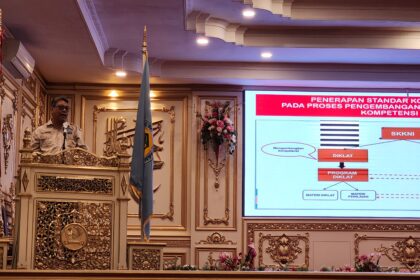[ad_1]
Anyone losing sleep over a coming surge in inflation can find all the reassurance they need in Tokyo.
The so-called “bond vigilantes†are suddenly fretting about a 1.4% US inflation rate. That annualized pace of increase in January, the fastest in five months, has punters who protest monetary or fiscal policies they deem reckless by selling debt in a whirl.
Markets are chattering about a fresh “taper tantrum,†should price dynamics prompt the Federal Reserve to tap the brakes.
Yet Japan’s experience shows why that’s highly unlikely.
Inflation? Yes, please
First off, given the depths to which the global economy fell in 2020, some inflation is very welcome. Hints that commodity prices are rising mean that our brush with the 1930s may be in the rearview mirror. Signs demand is perking up are reason to celebrate. So is any evidence that wages are recovering, not just in China but in all of the 10 biggest economies.
The things to watch are the extremes. Granted, Covid-19-related disruptions have obscured many a financial goalpost these last 12 months. More so, even, than the 2008-2009 global financial crisis did.
But the trauma over both shocks means that even the globe’s smartest economists are viewing a wildly unconventional scenario through lenses that are too conventional.
Case in point: former US treasury secretary Lawrence Summers bumping heads with Fed chairman Jerome Powell over a coming inflation reckoning. In recent speeches and op-eds, Summers warns that President Joe Biden is tempting the inflation gods by tossing another $1.9 trillion at the US economy.
Some are going as far as predicting something approaching Weimar Germany-level hyperinflation.
Among them, short-seller Michael Burry of “The Big Short†fame, who worries Washington is engaged in a Modern Monetary Theory experiment sure to go awry. He warned via Twitter that the “US government is inviting inflation with its MMT-tinged policies†and that “trillions more stimulus & re-opening to boost demand†will cause employee and supply-chain costs to “skyrocket.â€
Strategist Michael Hartnett at Bank of America calls post-World War I Germany the “most epic, extreme analog of surging velocity and inflation following end of war psychology, pent-up savings, lost confidence in currency and authorities.†He warns that in 2021 “lots of secular inflationary trends coincide with vaccine/reopening/supply catalysts.â€
There are loads of economists somewhere in between the inflationistas and those acknowledging a lack of corporate pricing power.Â
Economist Robin Brooks warns that “tantrum risk is elevated,†creating “fertile ground†for bond-market selloffs. “This could happen again mid-2021 once the economy reopens thanks to wide-spread vaccinations,†he says.
The bottom line on any new support being tossed at the economy, Summers says, is to “make sure that it is enacted in a way that neither threatens future inflation and financial stability nor our ability to build back better through public investment.†Otherwise, US living costs could overheat, forcing the Fed not just to taper, 2013-style, but even to hike rates in disruptive ways.
Economist Will Denyer at Gavekal Research notes “that at this stage in the recovery, another large fiscal stimulus package risks pushing inflation to levels the Fed may not be comfortable with.†Bottom line, he says, “with falling joblessness threatening to push up labor costs, fear of overheating could force the Fed to adjust its current dovish guidance, with all that implies for yields.â€
Yet Powell’s team at the Fed seems far more sanguine.
He argues, for example, that the official 6.3% unemployment rate is probably closer to 10%. In general, Fed officials say, consumer prices could perk up as society and commerce return to some semblance of normalcy. Those dynamics, are likely to be transient.
“We know what to do with higher inflation,†Powell told Congress recently, adding that low inflation is much harder to reverse than rising prices.
Economists go to war
Here, Powell is speaking the Bank of Japan’s language. Since 1999, the BOJ has done virtually everything imaginable to defeat deflation. It pumped untold trillions of dollars of liquidity into markets, cornered government bond trading, hoarded stocks and pushed interest rates negative.
In 2013, Governor Haruhiko Kuroda arrived on the scene to supersize efforts to lift the consumer price index to Tokyo’s 2% target. But even in the headiest moments, Japan’s CPI only got about halfway there – and that was mostly thanks to imported inflation thanks to rising oil prices.
Then the coronavirus arrived. That shock drove Japan’s CPI back into negative territory. In January, prices fell 0.6% year-on-year, the sixth consecutive monthly drop. That followed a 1% decline in December which was the biggest in more than 10 years. “There’s a chance,†warns economist Takeshi Minami at Norinchukin Research Institute, “that the nation will return to deflation due to the coronavirus pandemic.â€
Yet the “weak†private demand holding Japan back has been a feature since not just the Kuroda era, but the 1990s. In Japan’s case, structural barriers to inflation – including a fast-aging population that saves more than it spends – continue to take precedence over monetary and fiscal policy shifts.
And really, Japan’s rigid, low-productivity economic system seemed primed for surging prices. With the population shrinking for at least a decade and the workforce aging rapidly, wages should be skyrocketing. They might indeed if the conventional dynamics that Summers and his ilk have in their sights were at play in pandemic-plagued 2021.
Nobel laureate Paul Krugman, a keen student of Japan’s travails, argues that the $1.9 trillion package Biden’s White House is preparing isn’t stimulus. It’s a rescue mission to keep the US from suffering a 1930s-level period of secular stagnation. “Think of it as disaster relief or like fighting a war,†says the City University of New York professor. “When Pearl Harbor gets attacked, you don’t say, ‘How big is the output gap?’â€
The context for this latter comment is Summers’ worry that Biden’s fiscal jolt will throw out of whack the difference between the US economy’s level of output and its growth potential. Too much public money chasing too few goods and services, Summers worries, will boost inflation and bond yields. As these rates surge, they’re likely to send currencies into turmoil and slam stock valuations.
The problem, Krugman notes, is that many economists remain wedded to the so-called “Phillips curve.†This bedrock belief holds that there’s a strong correlation between unemployment and inflation. Except, when there’s not – as in Tokyo.
Eastern economics
Much of Krugman’s analysis is through the lens of Japan’s 1990s. And the applicable mistake that officials from Washington to Brussels continue to make is applying conventional tools to unconventional crises. Covid-19 is a (hopefully) once-in-a-lifetime health shock coming on top of a devastating, multi-year trade war amid the lingering wreckage of a 2008-2009 global reckoning.
The details of Japan’s crash are different, of course. In her study of Phillips curve dynamics, economist Hannah Kojima at New York’s Skidmore College notes that Japan’s aging-demographic oddities and gender inequities mean there’s now “little relation between inflation and unemployment.â€
Yet one common thread is the triple-whammy nature of shocks. In Japan’s case, that’s the debt hangover from the implosion of the 1980s “bubble economy,†decades of political gridlock and now Covid-era disruptions.
And decades on, the fallout continues to restrain demand-related inflation.
Japan really is Exhibit A for how the pandemic caught Asia and the broader global financial system with serious pre-existing conditions and exploited them ruthlessly. This means the odds favor deflation – or just disinflation – more than an old-school jump in inflationary pressures. Pricing power is just not a thing many companies or supply chains enjoy in 2021.
As many indicators as the pro-inflation crowd can cite, there are even more to caution calm.
As Asia Times’ very own Deputy Business Editor David P. Goldman argued recently, trading in US Treasury inflation-protected securities, or TIPS, suggest a roughly 2.4% rate going forward. Indications elsewhere, he argues, including the effect of higher oil costs, suggest “a very tepid price response to minor shocks from the commodity market.â€
Go big, early, often
Anyone who’s studied Japan’s trajectory these last 25 years won’t be surprised by the dearth of long-term inflation risks. The real lesson from Tokyo’s lost decades is that governments need to go very big, early and often.
After 1999, as deflation was becoming deeply ingrained, Japan unleashed more public stimulus packages than bureaucrats could probably count. Initially, they were small. Over time, they became larger in scale and audacity. Yet because the ruling Liberal Democratic Party took too long to get serious, deflation became a semi-permanent feature.
Today, Yoshihide Suge is the 10th consecutive prime minister to try his hand at ending deflation once and for all. He’s doing so 10 months after the previous government unleashed more than $2.2 trillion of fresh spending – that is $300 billion more than Biden – on the economy. And yet as 2021 gets underway, Japan’s CPI is back in the red just as Tokyo downgrades the economic outlook.
“Now is the time for fiscal spending and the government must commit to preventing a return of deflation,†Economy Minister Yasutoshi Nishimura told reporters on February 19.
And now is not the time to think that, 12-months into the global economy’s Covid-19 nightmare, old-school inflation rules still apply.
[ad_2]
Source link










